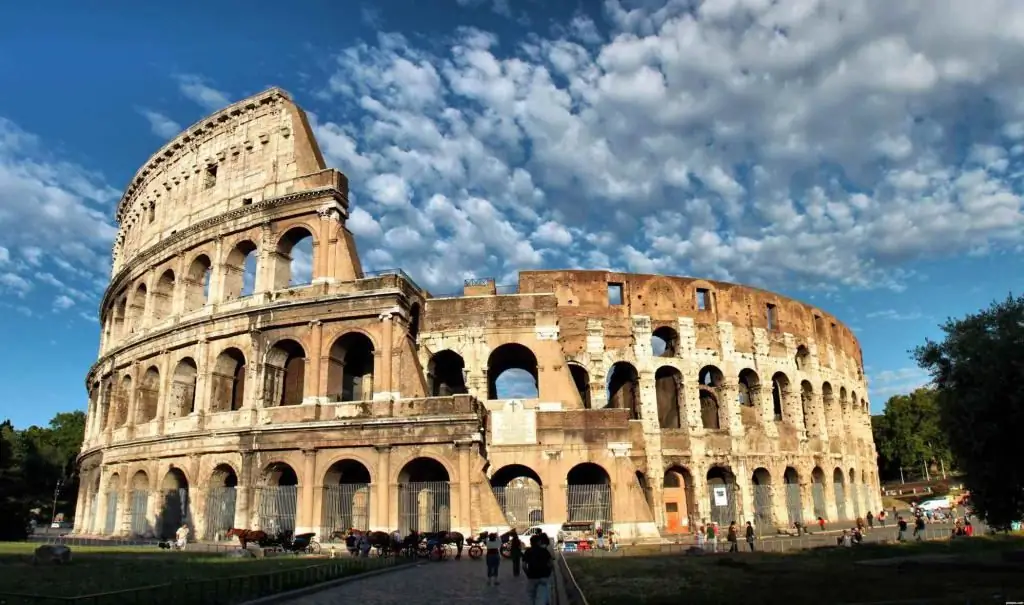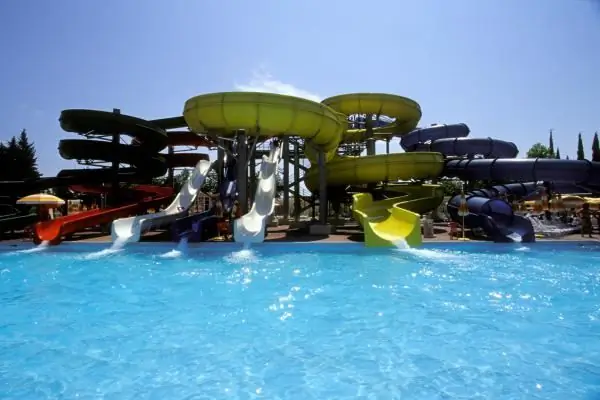- Author Harold Hamphrey [email protected].
- Public 2023-12-17 10:06.
- Last modified 2025-01-24 11:10.
One of the main attractions of the smallest territorially state in the world is the Vatican Gardens. It is estimated that this unique botanical complex occupies a little more than half of the entire territory of the Vatican State - about 20 hectares. They are located on the slopes of the hill to the west of the Vatican Palace.
The Vatican Gardens are not just thickets of trees and shrubs, they are entire architectural and landscape complexes with palaces, turrets, fountains. All architectural elements harmoniously fit into the stunning beauty of green lawns and squares.
History of occurrence

The history of the Vatican gardens begins in ancient times. The first mention of it as a holy place is found in the chronicles of Ancient Rome, when Roman soothsayers (augurs) uttered their prophecies on the Vatican Hill. Because of this, the surroundings of the hill were considered a holy place, and people were forbidden to establish settlements there.
After the adoption of Christianity, the Vatican Hill and the area around it were still consideredsacred. The only building, the basilica at the burial place of the first head of the Christian church - St. Peter, was built in 326 AD. Over time, priestly dwellings began to appear around it.
According to legend, the first garden of the Vatican was built around the new palace of Pope Nicholas III. True, it was not a garden in the modern sense, rather, it was a small nursery of medicinal plants. Since then, each pope has added something of his own to the arrangement of gardens, until centuries later the Vatican Gardens became the pinnacle of landscape art.
Green Paradise Device

Due to the fact that the landscape of the Vatican Gardens was created without any plan and scheme, and each subsequent pope tried to expand and improve their design, an unusually beautiful place for relaxation and reflection appeared.
All parts of the garden are different from each other, even with a strong desire, it will not be possible to find similar ones. There is only one similarity: thanks to the tireless work of 30 gardeners, all the plants in the garden look well-groomed. The basis of the Vatican Gardens are evergreen trees: cedars, pines, boxwood, olives, because of them, a riot of greenery continues all year round.
This part of Italy has a mild subtropical climate, so even capricious exotic plants grow well here. And the collection of cacti collected from all over the world will leave an unforgettable impression.
From the outside world, the gardens are fenced off by high walls erected during the Renaissance. Previously, they served to protect against attacks, but now they performmore of a decorative function. Partly they have collapsed, and the remains of stone walls, densely overgrown with ivy and other climbing plants, do not seem intimidating at all.
In order to keep the water supply to the gardens uninterrupted even during the dry summer months, an aqueduct was built in the 17th century to bring water from a lake forty kilometers away.
French gardens

French gardens are considered one of the hallmarks of this well-kept landscape park. They are decorated with numerous green arches entwined with climbing roses and yew. Many travel brochures have a picture of the dome of St. Peter's Basilica among the flowering arches. Another highlight of the French gardens is the large green labyrinth, the smooth walls of which are composed of carefully trimmed evergreen shrubs.
You can also admire the famous Lourdes grottoes, the stone walls of which are densely overgrown with thick ivy. These grottoes are an exact copy of the original located in France. Amid thickets of dark green ivy, a statue of the Virgin Mary, depicted as a teenage girl, can be seen.
In general, on the territory of the Vatican Gardens in Rome there are many statues, from ancient antique to masterpieces of modern art.
Italian garden

The decoration of the Italian park are numerous red acacia trees. The flowers of this tree are extremely unusual - they resemble a cockscomb not only in shape, but also in their coral-red color. The flowering period of the red acacia is more than nine months (from April to December), so garden guests can admire their unusual beauty for a long time.
Ceramic vessels with blooming azaleas are placed throughout the Italian park. Many are set directly on the ground, some are placed on special decorative stands.
And yet, walking through the Italian part of the Vatican Gardens, you can see one of the variants of the ancient refrigerator - large ceramic vessels with tight-fitting lids. Our ancestors buried such pots up to their necks in the ground, and food was preserved in them even in hot weather.
English park

When visiting the English Park, one gets the impression that this is a piece of wild untouched nature, which the hands of designers have not touched. In fact, the opposite is true, the location of each tree and each supposedly chaotically lying stone was carefully thought out by talented gardeners. Therefore, it is not surprising that the current dad chose the English Park for morning runs.
There are many statues, columns and decorative stones on the territory of the English Park. Sometimes it seems that part of the column has fallen from antiquity - in fact, this is a well-adjusted design move. And it seems that the natural heaps of rapids and whirlpools of the "Little Falls" fountain were created by the hands of industrious servants.
How to get to the Vatican Gardens

Unlike completely free museum visitsVatican City, visiting the gardens at the Pope's residence is strictly regulated. For tourist groups, they are open on all days except Wednesdays, Sundays and holidays.
Usually there is only one excursion per day for a limited group of guests, very rarely there are two excursions. Therefore, it is better for those who wish to sign up in advance, at least two months in advance. You can do this on the official portal of the Vatican by choosing the time and date of your visit. Then you need to pay for a combined ticket. Buying a single ticket also gives you the opportunity to skip the line to visit all the museums of the state in the state. You can use this until 18 pm.
Excursions are conducted only by special guides serving in the Vatican. Even when ordering an individual excursion, it will be carried out as part of a general group. Tourists are provided with an audio guide in English, Spanish, German or Italian. For Russian-speaking guests, it is better to choose an individual guide in advance.
Visit Rules

Given that the Vatican Gardens are not only a beautiful landscape park, but also the residence of the current head of the Catholic Church, there are quite a few rules when inspecting them.
It is not recommended to come on an excursion to the Vatican Gardens in overly open clothes (shorts and T-shirts with bare shoulders are prohibited). Also, you can’t take dimensional things with you, even you may be asked to leave a camera tripod at the entrance. Before the start of the visit, the polite guardsmen from the Pope's security service will definitely inspect things. By the way,photographing these brave Swiss guards is prohibited.
During the tour, it is forbidden to separate from the main group, leave the paths of the garden, touch or pick any plants. It is still not possible to shoot video, although you can take pictures of everything. It is better to charge the camera well and take a spare memory card with you, you will want to capture everything you see.
How tours work

It seems that two hours of visiting the Vatican Gardens of the Vatican will not be enough to see the huge natural landscape park. However, a professional tour is organized in such a way that it captures most of the significant parts of the garden. During the tour, in addition to a walk in the garden, you can visit the Church of Santo Stefano del Abessini, the Palazzo San Carlo, the House of the Archpastors, the Gallinaro Tower, the Governor's Palace and many more architectural and landscape treasures of the Vatican.
A few years ago, due to the increase in the number of people dreaming of visiting the Vatican Gardens, the administration developed a special bus tour.
It is held only in the gardens, guests are transported along shady alleys in small eco-cars. The duration of such an excursion is about an hour, during which time the bus makes 12 stops so that guests can better view the picturesque landscape. However, you are not allowed to get off the bus during the tour, even during stops.
The well-groomed gardens and parks of the Vatican are beautiful at any time of the year, peace and serenity always reign in them…






